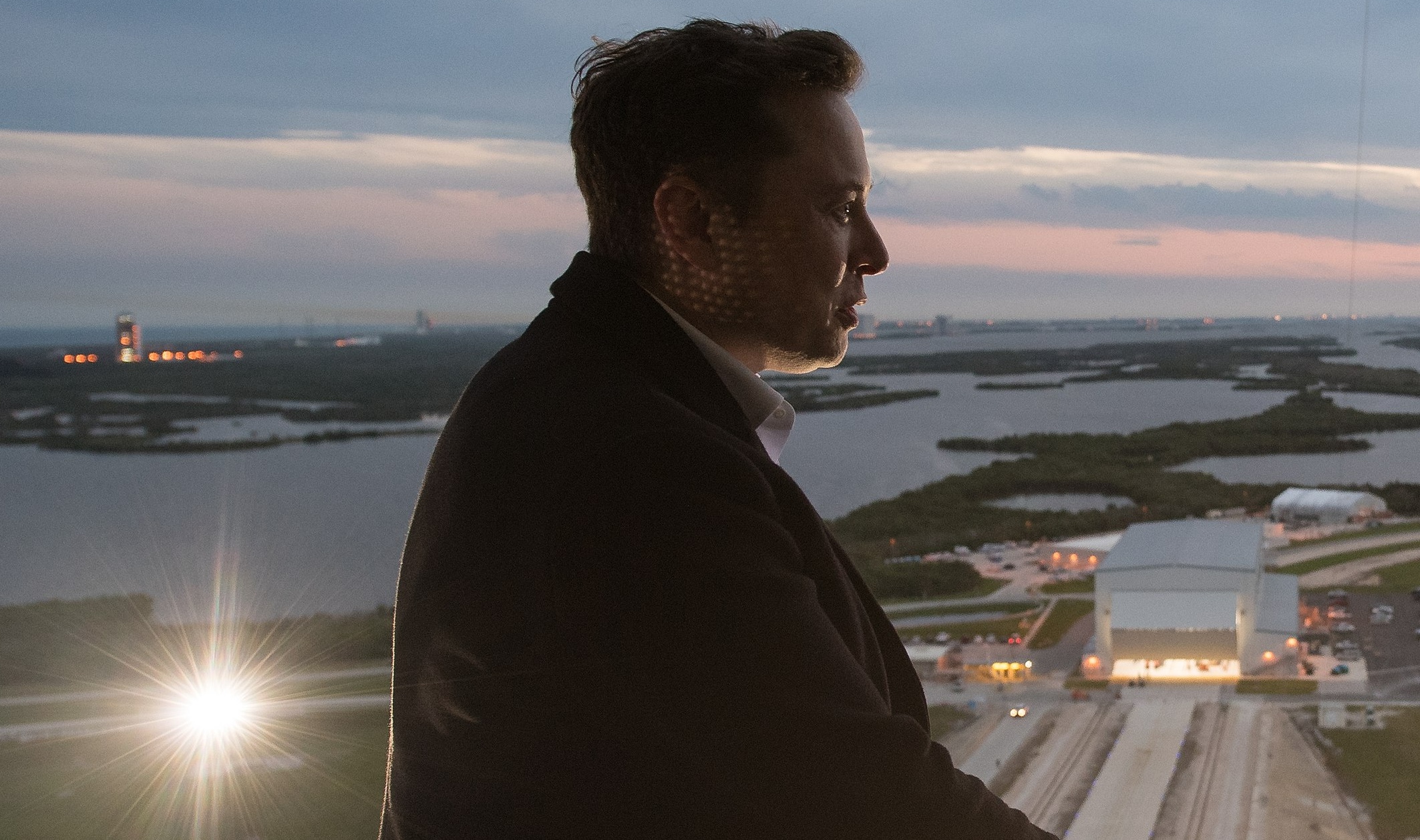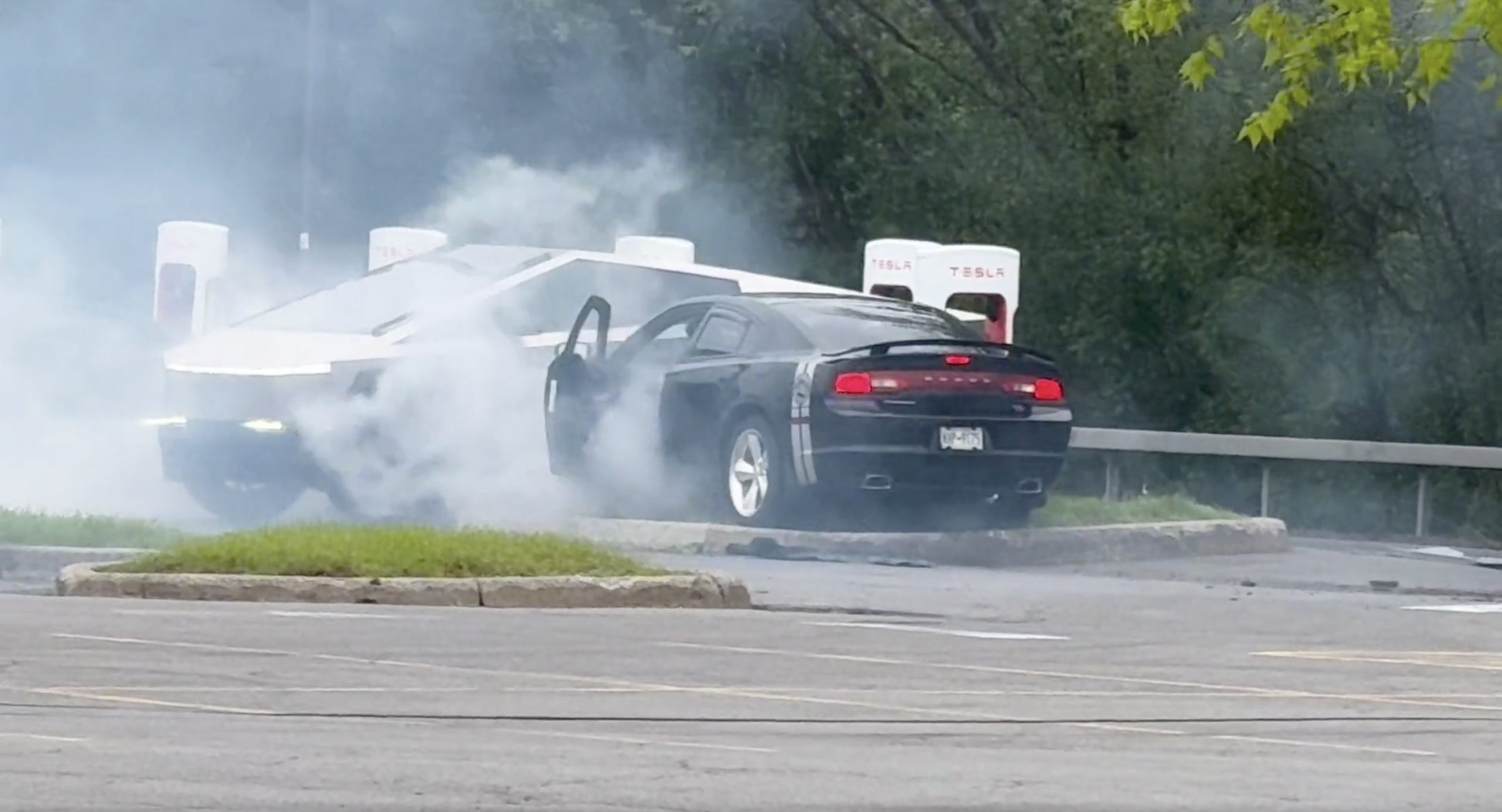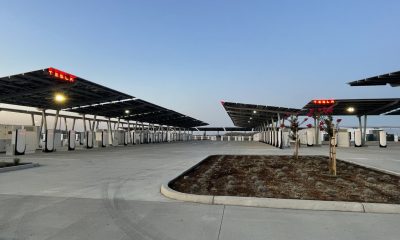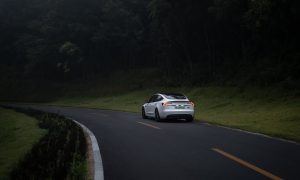

Lifestyle
Tesla Model S, Model 3 set hypermile records: 701 mi. (1128 km) and 623 mi. (1001 km), respectively
German car rental company nextmove recently set a new hypermile record for the Tesla Model S, traveling a total of 701 miles (1,128 kilometers) on a single charge over more than 30 straight hours of driving at the DEKRA test circuit at Lausitzring in Brandenburg, Germany.
Being a car rental company, nextmove was quite familiar with Tesla’s electric cars. The company selected the Model S 100D as its car of choice for its hypermile attempt, and as could be seen in the video, a set of classic Aero Wheels for the full-sized all-electric sedan was also fitted on the vehicle. In a way, selecting the Model S 100D for the task is strategic, considering that the variant of the electric car has the highest EPA rating among Tesla’s offerings at 335 miles (539.1 km) per charge. In comparison, the EPA has a rating of 315 miles for the Model S 100D’s faster sibling and world’s quickest production car – the P100D.
The nextmove team was deliberate in its hypermile attempt to overtake the previous hypermile record set by another Model S 100D after it drove 670 miles (1,077 km) on a single charge. Last year’s feat, which was accomplished by Tesla Owners Italia, ultimately confirmed Elon Musk’s statement on Twitter that with the right tires, the Model S should be able to travel 1000 km in one charge. During its run, Tesla Owners Italia’s Model S 100D maintained an average of 91 Wh/km. On the latter parts of the journey, however, the electric car became even more efficient, hitting 88 Wh/km during the final 77 km of driving.
During nextmove’s recent attempt, the team immediately went for an average of 88 Wh/km, traveling at a constant speed of 38 kph (23.6 mph). According to nextmove Managing Director Stefan Moeller, the company’s car rental activities ultimately became practice for its record-setting hypermile run.
“As an electric car rental, we know many models very well from everyday practice. So we had a good sense of how long we could delay the ride in the end, without lying down. We managed to drive the Model S completely empty and come to a stop in the base camp directly at a loading facility,” he said.
The feat, however, did not come without challenges or discomforts. The hypermile attempt lasted a total of 31 hours, and to save on battery life, the vehicle’s windows were mostly closed and opened only for ventilation. No air conditioning was used, and the Model S 100D’s radio was not turned on as well. Autopilot was briefly used during the run, though nextmove stated that most of the steering was done by its drivers. Cruise control was utilized to control the vehicle’s speed to just 38 kph. By the time the drive was completed, the Model S 100D had traveled 1,128 kilometers (701 miles), with an average efficiency of 89 Wh/km.

A Tesla Model S 100D with Aero Wheels recently set a new hypermile record. [Credit: nextmove]
The quality of its battery packs and its vehicle’s range are among Tesla’s main strengths. Apart from the Model S, the nextmove team also set another record for the Model 3, traveling 623 miles (1,001 km) in a single charge. Unlike the Model S, however, the Model 3 accomplished its feat entirely on Autopilot, with a dummy on the driver’s seat simulating a driver.
While hypermiling does not really depict real-world driving scenarios, it is still quite impressive to see how far electric cars could travel when their efficiency and battery life are pushed to the limit. Earlier this year, two Tesla owners, Denver Tesla Club president Sean Mitchell and Erik Strait, a fellow Tesla owner and host to a popular YouTube channel, managed to squeeze as much as 606.2 miles (975.58 km) from a Model 3. Unlike nextmove, which did its hypermile run on a closed circuit, the two Tesla enthusiasts conducted their drive on public roads, simulating a more realistic driving scenario.
Watch nextmove’s record-setting hypermile run on the Tesla Model S 100D in the video below.
Elon Musk
X account with 184 followers inadvertently saves US space program amid Musk-Trump row
Needless to say, the X user has far more than 184 followers today after his level-headed feat.

An X user with 184 followers has become the unlikely hero of the United States’ space program by effectively de-escalating a row between SpaceX CEO Elon Musk and President Donald Trump on social media.
Needless to say, the X user has far more than 184 followers today after his level-headed feat.
A Near Fall
During Elon Musk and Donald Trump’s fallout last week, the U.S. President stated in a post on Truth Social that a good way for the United States government to save money would be to terminate subsidies and contracts from the CEO’s companies. Musk responded to Trump’s post by stating that SpaceX will start decommissioning its Dragon spacecraft immediately.
Musk’s comment was received with shock among the space community, partly because the U.S. space program is currently reliant on SpaceX to send supplies and astronauts to the International Space Station (ISS). Without Dragon, the United States will likely have to utilize Russia’s Soyuz for the same services—at a significantly higher price.
X User to the Rescue
It was evident among X users that Musk’s comments about Dragon being decommissioned were posted while emotions were high. It was then no surprise that an X account with 184 followers, @Fab25june, commented on Musk’s post, urging the CEO to rethink his decision. “This is a shame this back and forth. You are both better than this. Cool off and take a step back for a couple days,” the X user wrote in a reply.
Much to the social media platform’s surprise, Musk responded to the user. Even more surprising, the CEO stated that SpaceX would not be decommissioning Dragon after all. “Good advice. Ok, we won’t decommission Dragon,” Musk wrote in a post on X.
Not Planned, But Welcomed
The X user’s comment and Musk’s response were received extremely well by social media users, many of whom noted that @Fab25june’s X comment effectively saved the U.S. space program. In a follow-up comment, the X user, who has over 9,100 followers as of writing, stated that he did not really plan on being a mediator between Musk and Trump.
“Elon Musk replied to me. Somehow, I became the accidental peace broker between two billionaires. I didn’t plan this. I was just being me. Two great minds can do wonders. Sometimes, all it takes is a breather. Grateful for every like, DM, and new follow. Life’s weird. The internet’s weirder. Let’s ride. (Manifesting peace… and maybe a Model Y.)” the X user wrote.
Lifestyle
Tesla Cybertruck takes a bump from epic failing Dodge Charger
The Cybertruck seemed unharmed by the charging Charger.

There comes a time in a driver’s life when one is faced with one’s limitations. For the driver of a Dodge Charger, this time came when he lost control and crashed into a Tesla Cybertruck–an absolute epic fail.
A video of the rather unfortunate incident was shared on the r/TeslaLounge subreddit.
Charging Charger Fails
As could be seen in the video, which was posted on the subreddit by Model Y owner u/Hammer_of_something, a group of teens in a Dodge Charger decided to do some burnouts at a Tesla Supercharger. Unfortunately, the driver of the Charger failed in his burnout or donut attempt, resulting in the mopar sedan going over a curb and bumping a charging Cybertruck.
Ironically, the Dodge Charger seemed to have been parked at a Supercharger stall before its driver decided to perform the failed stunt. This suggests that the vehicle was likely ICE-ing a charging stall before it had its epic fail moment. Amusingly enough, the subreddit member noted that the Cybertruck did not seem like it took any damage at all despite its bump. The Charger, however, seemed like it ran into some trouble after crashing into the truck.
Alleged Aftermath
As per the the r/TeslaLounge subreddit member, the Cybertruck owner came rushing out to his vehicle after the Dodge Charger crashed into it. The Model Y owner then sent over the full video of the incident, which clearly showed the Charger attempting a burnout, failing, and bumping into the Cybertruck. The Cybertruck owner likely appreciated the video, in part because it showed the driver of the Dodge Charger absolutely freaking out after the incident.
The Cybertruck is not an impregnable vehicle, but it can take bumps pretty well thanks to its thick stainless steel body. Based on this video, it appears that the Cybertruck can even take bumps from a charging Charger, all while chilling and charging at a Supercharger. As for the teens in the Dodge, they likely had to provide a long explanation to authorities after the incident, since the cops were called to the location.
Lifestyle
Anti-Elon Musk group crushes Tesla Model 3 with Sherman tank–with unexpected results
Ironically enough, the group’s video ended up highlighting something very positive for Tesla.

Anti-Elon Musk protesters and critics tend to show their disdain for the CEO in various ways, but a recent video from political action group Led By Donkeys definitely takes the cake when it comes to creativity.
Ironially enough, the group’s video also ended up highlighting something very positive for Tesla.
Tank vs. Tesla
In its video, Led By Donkeys featured Ken Turner, a 98-year-old veteran who served in the British army during World War II. The veteran stated that Elon Musk, the richest man in the world, is “using his immense power to support the far-right in Europe, and his money comes from Tesla cars.”
He also noted that he had a message for the Tesla CEO: “We’ve crushed fascism before and we’ll crush it again.” To emphasize his point, the veteran proceeded to drive a Sherman tank over a blue Tesla Model 3 sedan, which, of course, had a plate that read “Fascism.”
The heavy tank crushed the Model 3’s glass roof and windows, much to the delight of Led By Donkeys’ commenters on its official YouTube channel. But at the end of it all, the aftermath of the anti-Elon Musk demonstration ended up showcasing something positive for the electric vehicle maker.
Tesla Model 3 Tanks the Tank?
As could be seen from the wreckage of the Tesla Model 3 after its Sherman encounter, only the glass roof and windows of the all-electric sedan were crushed. Looking at the wreckage of the Model 3, it seemed like its doors could still be opened, and everything on its lower section looked intact.
Considering that a standard M4 Sherman weighs about 66,800 to 84,000 pounds, the Model 3 actually weathered the tank’s assault really well. Granted, the vehicle’s suspension height before the political action group’s demonstration suggests that the Model 3’s high voltage battery had been removed beforehand. But even if it hadn’t been taken off, it seemed like the vehicle’s battery would have survived the heavy ordeal without much incident.
This was highlighted in comments from users on social media platform X, many of whom noted that a person in the Model 3 could very well have survived the ordeal with the Sherman. And that, ultimately, just speaks to the safety of Tesla’s vehicles. There is a reason why Teslas consistently rank among the safest cars on the road, after all.
-

 Elon Musk1 week ago
Elon Musk1 week agoTesla investors will be shocked by Jim Cramer’s latest assessment
-

 News2 weeks ago
News2 weeks agoTesla Robotaxi’s biggest challenge seems to be this one thing
-

 News2 weeks ago
News2 weeks agoWatch the first true Tesla Robotaxi intervention by safety monitor
-

 Elon Musk1 week ago
Elon Musk1 week agoA Tesla just delivered itself to a customer autonomously, Elon Musk confirms
-

 News2 weeks ago
News2 weeks agoTesla Robotaxi rollout proves that Elon Musk still delivers, even if it’s late
-

 Elon Musk2 weeks ago
Elon Musk2 weeks agoxAI welcomes Memphis pollution results, environmental groups push back
-

 Elon Musk2 weeks ago
Elon Musk2 weeks agoElon Musk commends Tesla team on successful Robotaxi launch
-

 Elon Musk2 weeks ago
Elon Musk2 weeks agoElon Musk confirms Tesla Optimus V3 already uses Grok voice AI

















